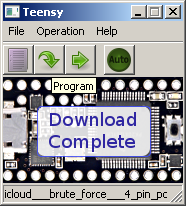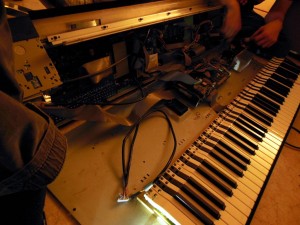what to to, when a dude smashes a harddrive from a mac? the new drive dosnt have a clue about the ingredients of the machine, the firmware/bios is like a sissy to not let the owner accessing the system. several ways to get into the mac osx, but over the years, the rules went harder and one should explain the story to the support at some point.

apple puts a lot of energy into their politics, to seal the borders of that system and to save the mac from other influences, except theirselfs. icloud is nowadays a default package, the most services, like imessage, is backed up in the cloud. no way to use such devices without such id for that storage and control of puzzlepiece. the mac is locked until the code of consumption is entered or penalty is payed to apples money-machine via customer care. fucking with assemblercode, to tweak the bios with u/efi and all that shit, is not even a plan. the firmware to restart the system is hidden within some hashes from the mainboard and the password itself, reverse engineering was not my plan for today.

if the mac is hanging on the four number code, to get back to live, one could call the customer care to get a scbo file or try typing the nearly 9999 combinations by hand. others are lazy to do so, a small processor, based on arm with 64kb ram, can do the same, much more gently. the tiny pcb ( printed circuit board ) with a size of 35 x 17mm holds a usb-connector, the cpu with 256kb rom and a lot of connectors to participate with others.
the firmware tells its a v.1.03, flashed with the customized arduino ide ( integrated desktop enviroment { development tool } ) within seconds on the freescale MK20DX256, but with some difficulties. arduino is not just a misswritten word, they could be seen as major pusher behind that uprising developer-board-scene. that teensy is a clon in some way, but in fact, arm or atmel had a product line over the past years, so one can find several configurations, sources and dealerprices, to get into the rush of diy, for a fistful flies. another eclipse plugin should be named, but i had so-so results on the download site, all files were incomplete, i guess the traffic limit is taken, on the end of the month. the project should move to the next level then.

as i hadnt much experience with avr/atmel chips at all, i decided, to put everything in a virtual box, on windows 7 for some reasons. but suprise suprise, the winavr-toolkit wants to lay inside the default folder ( ${winDrive/winavr } ) instead of being sorted with others in the standard folder for program files (x86). anyhow, the masterpiece of microsoft is, that the usb port and parameter is buffered/saved within the registry and due to other lacks of their understanding of software design, the programer wont flash the hex.code from the arduino software into the chip. excellent, couple of hours later i gave up on this, as i wanted to use eclipse for larger developments.
so, burning the working code to the chip was only possible, with a direct connect to the host-system. some years ago, i played with a atmega ( think was …32 ) for a laser-tester, that one had started with basic-code. the arduino enviroment has its own syntax and file-extension.ino and with gnu, c/c++ software the architecture could be cascaded.

so, the chip is now ready to stupidly check each number, from 0000->9999 until the mac agrees to work again, when the correct passcode is clearly analyzed, by try& error. oh yeah, the soc could do much more then this, but the case was just there, to check the stuff with a goal to reach. some dozen projects and use-cases for that little machine is visible on the web: dj-controller, measurement boxes with lcd displays or game-engines are out there and many other ideas are just eyeblinks away.
bigger or larger projects will clearly need some more attention and notes to be realized, but with a sd-card-slot in dollar-distance, the bugs for a unique or genuine solution is definitly no high steak or far away. things can be made and grown with developer kits, analog or digital interfaces, up to the samplerate of a oscilloscope or analyzer by mean.








